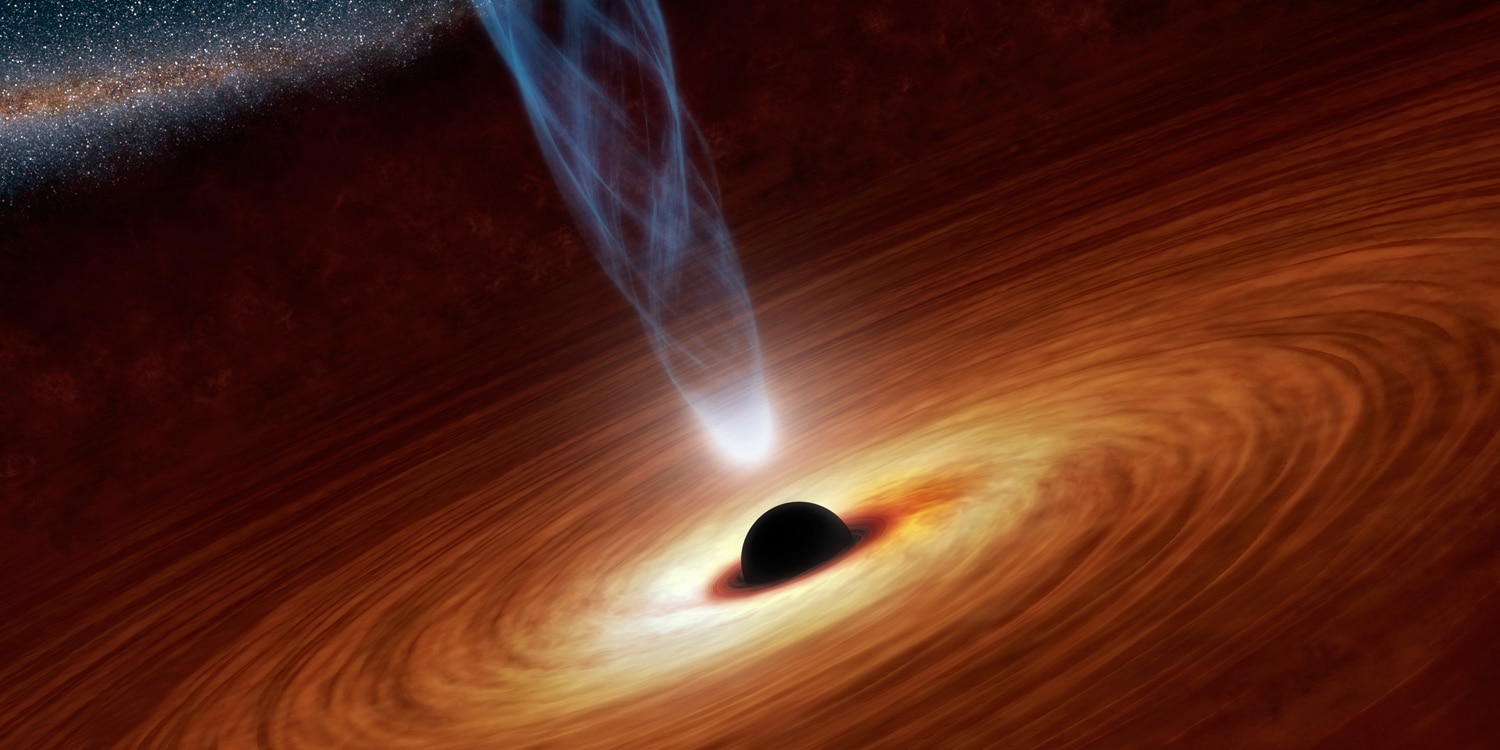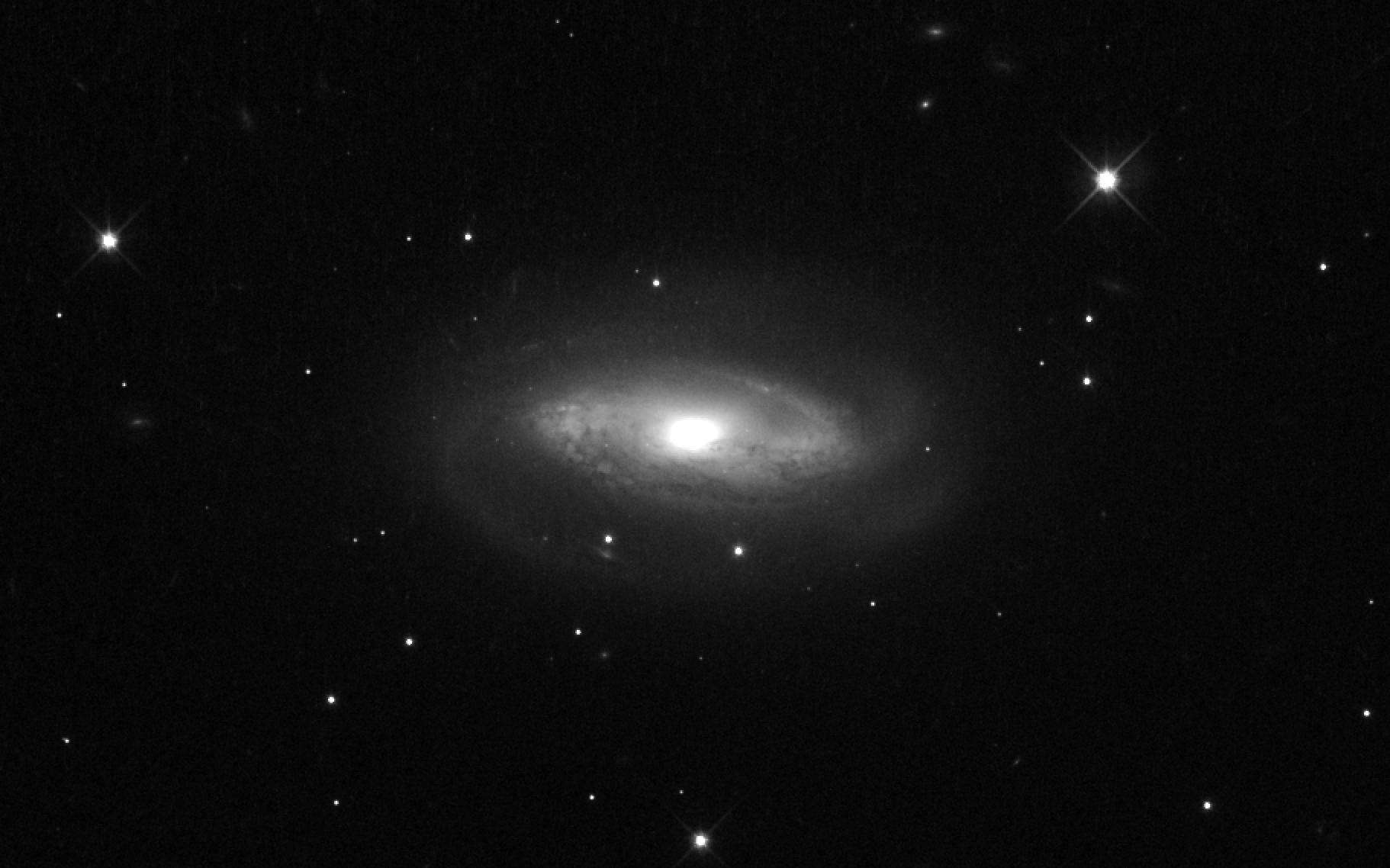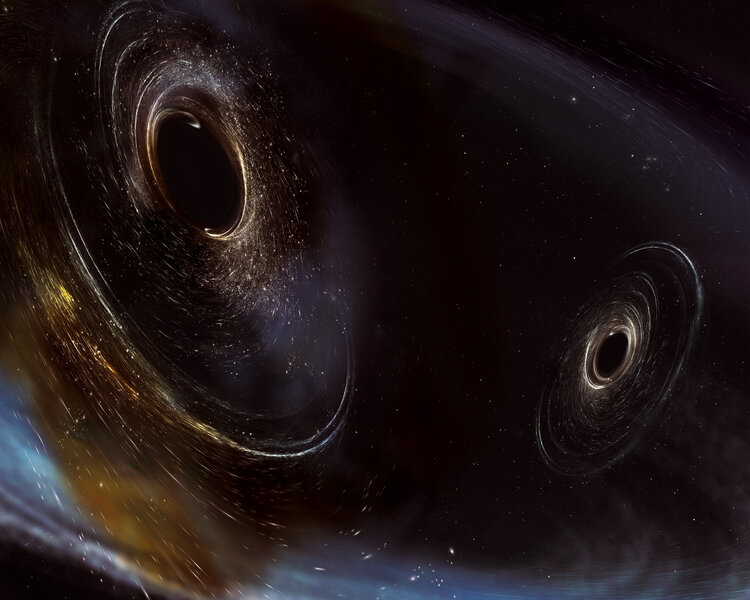Create a free profile to get unlimited access to exclusive videos, sweepstakes, and more!
What tossed a supermassive black hole around in the center of a distant galaxy?

You'd think that tossing around a supermassive black hole equal to the mass of three million times that of the Sun's would be difficult. But for the galaxy J0437+2456 something did exactly that. The question is, what?
The answer, one way or another: Another supermassive black hole.
We think that every big galaxy has a supermassive black hole in its center, with millions or even billions of times the mass of the Sun. In general, we also expect this monster to sit in the exact center of the galaxy. We call this the dynamic center, the point around which everything else in the galaxy revolves. We know this to be true of Sgr A*, the black hole in the center of our Milky Way galaxy.
But is it true everywhere? We know that smaller galaxies, with their correspondingly weaker gravity, can have offset black holes, but in those cases the black holes are generally underweight and easier to move around, possibly when the galaxy collides with another one. This can create gravitational havoc, moving the black hole off-center.
Is that possible in bigger galaxies? To find out, a few years ago a team of astronomers did something clever. If a black hole is moving away from a galaxy's center, then the black hole and the galaxy will have two different velocities relative to us. Think of it like a passenger on a bus standing up and walking down the aisle toward the back; if you stand behind the bus as it pulls away it might move at 50 kilometers per hour away from you, but the passenger will be moving 48 km/hr away due to their own motion.
Getting the overall velocity of a galaxy isn't too hard. Taking a spectrum can give you the velocity via the Doppler shift, and that can be done observing the stars, gas clouds, and more. But how do you measure the velocity of the black hole?
Some of these black holes are active, meaning they are actively gobbling down material. This matter forms a disk around the black hole, which gets very hot due to internal friction. Some of that material is literally water vapor, molecules of water. A quirk of physics allows them to glow in microwave light as a maser, the microwave equivalent of a laser. These sources can be incredibly powerful (in these cases their called megamasers, which is just cool), and they blast away this light at a very specific wavelength. They're so strong they can be detected from hundreds of millions of light years away! Because this material is circling the black hole, measuring the Doppler shift of that light gives you the velocity of the black hole itself.
If the black hole is sitting at the galaxy center and not moving, the velocity of the galaxy and of the black hole will be the same. For nine galaxies they observed that was true, but for one, called SDSS J043703.67+245606.8 (let's call it J0437 for short) it wasn't. They measured a difference, but it was hard for them to be certain.
Fast forward to now. Many members of that team re-observed J0437, getting better observations and using more precise methods of analysis. They looked at hydrogen gas using the huge Arecibo radio telescope (before its unfortunate and awful demise), stars and other kinds of gas using the Gemini telescope, and an array of radio telescopes called Very Long Baseline Interferometry (or VLBI), which looks at the water masers with incredible precision.
What they found is that is that yes indeedy, the galaxy is moving away from us at about 4860–4900 kilometers per second (due to the expansion of the Universe), but the black hole is moving away from us at only 4809 km/sec. That's significantly slower than the galaxy! In other words, the black hole is moving around inside the galaxy itself, and at something like 50 km/sec, which is fast, especially considering its mass of 3 million Suns.
What could cause this? Three things: The black hole might be in a binary system with another massive black hole, and as it orbits around it we're seeing that velocity. Binary black holes like this should be common, but they're pretty hard to detect, so if this is the case that's pretty cool.
A second way is if the black hole was once a binary, but the two black holes merged. This releases a truly vast amount of energy, and sometimes that energy is directed to one side. This acts like a rocket, pushing the black hole away at a pretty decent velocity. This is also difficult to detect and very cool if true.
A third way is if two galaxies collide and merge, and the supermassive black hole of one is falling toward the center of the resulting galaxy. If this were the case you'd expect the galaxy itself to be disturbed in some way, and in fact the observations of the stars and gas in J0437 do seem to indicate they have been rocked by a merger some time in the recent cosmic past. So this might be the case.
On the other hand, you can get a binary black hole after a galaxy merger as well, when the two galaxies' black holes meet in the middle. So it's not easy to know what's what, and in fact the astronomers don't draw any firm conclusions as to why the black hole appears to be careening around the galaxy's core.
The good news is that they show it's possible to find galaxies like this, and this is a viable method to look for wayward supermassive black holes. We expect there should be quite a few, and knowing how often this happens would provide a vital clue into the secret lives of galaxies. How often do they merge? What happens to these monsters after? What percentage of galaxies does this happen to?
Galaxies have been around a long time, nearly as long as the Universe itself, and have a lot of history for us to untangle. Happily, there are billions of galaxies out there to study. Even rare weird things happen often with that big a sample size, so we'll find more of these cannonball black holes the more we look.

















